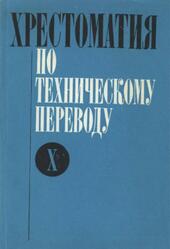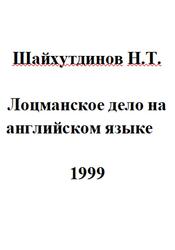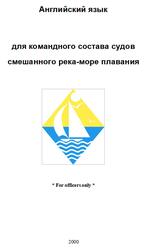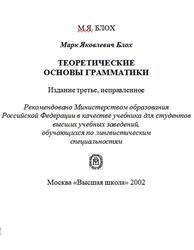This book presents a contrastive analysis of causative constructions in Japanese and English. In view of the title, both syntactic and semantic aspects regarding causative constructions are taken into account, the discussion of the semantic aspects preceding however the analysis of the syntactic behavior of causatives. The reason for that lies, in my opinion, in the impossibility of describing the syntax of causatives accurately without resorting to their semantic properties first.

The causee.
In the causative situation, the causee represents the medium through which the causer performs the action resulting in the caused event. The semantic roles that the causee may take go from Agent to Object depending on various parameters that I will further refer to. Dixon's three semantic parameters relating to the causee - control, volition and affectedness (Dixon 2000) - will be discussed in reference to the two languages I am considering in this book.
In regard to the parameter of control, let us first consider the distinction animate/inanimate in the case of causee. Unlike the situation regarding the causer/causing process, the causee is represented by an entity and not by an event, both in Japanese and in English. Animacy is not marked in either of the languages that I am analyzing, as it happens in Creek15, for example, but it plays an important role in the selection of the entity functioning as the causee. Inanimate causees lack control and are preferred in the use of lexical causatives in both languages.
Contents.
INTRODUCTORY REMARKS.
LIST OF ABBREVIATIONS.
CHAPTER 1 - INTRODUCTION.
CHAPTER 2 - EXPRESSIONS OF CAUSATION.
2.1. Causation/causality in the natural world and in natural languages.
2.2. Linguistic expressions of causation/causality.
2.3. Models for an analysis of causative constructions.
2.3.1. Song (1996).
2.3.1.1. The COMPACT type.
2.3.1.2. The AND type.
2.3.1.3. The PURP type.
2.3.2. Talmy (1976, 2000).
2.3.3. Dixon (2000).
2.4. Causative construction in Japanese and English.
2.4.1. Overview of Japanese causatives.
2.4.2. Overview of English causatives.
CHAPTER 3 - SEMANTICS OF CAUSATIVE CONSTRUCTIONS.
3.1. Elements of the causative situation.
3.2. The causing process.
3.2.1. Underlying semantic predicates of the causing process (lexical causatives).
3.2.1.1. COME ABOUT.
3.2.1.2. CONTROL.
3.2.1.3. INITIATE.
3.2.1.4. CAUSE.
3.2.2. Agentive causers.
3.2.2.1. Direct, indirect and sociative causation.
3.2.3. Non-agentive causers.
3.3. The causee.
3.4. The result.
3.5. Causing event - Result.
CHAPTER 4 - SYNTAX OF CAUSATIVE CONSTRUCTIONS.
4.1. Lexical causatives.
4.1.1. The derivation of lexical causatives.
4.1.2. The syntactic structure of lexical causatives.
4.2. Periphrastic causatives.
4.3. Morphological causatives.
4.3.1. (s)ase causative ~ lexical item.
4.3.1.1. Phonological arguments.
4.3.1.2. Morphological arguments.
4.3.1.2.1. (s)ase - bound morpheme.
4.3.1.2.2. The potential.
4.3.1.3. Lexical arguments.
4.3.1.3.1. Reduplication.
4.3.1.3.2. Blocking.
4.3.1.4. Syntactic arguments.
4.3.1.4.1. Subject honorification.
4.3.1.4.2. Question/answer pairs.
4.3.2. (s)ase causative ~ non-lexical item.
4.3.2.1. Reflexive binding.
4.3.2.2. Adjunct and quantifier scope.
4.3.2.3. Subject honorification.
4.3.3. Syntactic analyses of morphological causatives.
4.3.3.1. Biclausal analyses.
4.3.3.1.1. Kuroda (1965).
4.3.3.1.2. Kuno (1973).
4.3.3.1.3. Shibatani (1973).
4.3.3.2. Monoclausal analyses.
4.3.3.3. Complex analyses.
4.3.3.3.1. Kitagawa (1986).
4.3.3.3.2. Uda (1994).
4.3.3.3.3. Gunji (1999).
4.3.3.3.4. Matsumoto (1996).
CHAPTER 5 - FINAL REMARKS.
BIBLIOGRAPHY.
Бесплатно скачать электронную книгу в удобном формате, смотреть и читать:
Скачать книгу Causative constructions in Japanese and English, Ciubancan M., 2014 - fileskachat.com, быстрое и бесплатное скачивание.
Скачать pdf
Ниже можно купить эту книгу, если она есть в продаже, и похожие книги по лучшей цене со скидкой с доставкой по всей России.Купить книги
Скачать - pdf - Яндекс.Диск.
Дата публикации:
Теги: учебник по английскому языку :: английский язык :: Ciubancan
Смотрите также учебники, книги и учебные материалы:
Следующие учебники и книги:
 Email english, Emmerson P., 2013 — Learners of English at intermediate or upper-intermediate level who want to write better emails. It can be used by learners … Книги по английскому языку
Email english, Emmerson P., 2013 — Learners of English at intermediate or upper-intermediate level who want to write better emails. It can be used by learners … Книги по английскому языку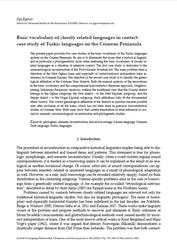 Basic vocabulary of closely related languages in contact, Egorov I. — The present paper provides two case studies of the basic vocabulary of the Turkic languages spoken on the Crimea Peninsula. … Книги по английскому языку
Basic vocabulary of closely related languages in contact, Egorov I. — The present paper provides two case studies of the basic vocabulary of the Turkic languages spoken on the Crimea Peninsula. … Книги по английскому языку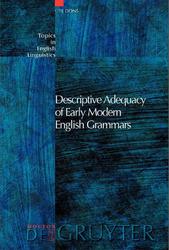 Descriptive adequacy of early modern English gramma, Dons U., 2004 — This book deals with the development of a grammar-writing tradition during the Early Modern English period. It will evaluate the … Книги по английскому языку
Descriptive adequacy of early modern English gramma, Dons U., 2004 — This book deals with the development of a grammar-writing tradition during the Early Modern English period. It will evaluate the … Книги по английскому языку The english grammar workbook for adults, DiGiacomo M., 2020 — This book is divided into two parts. The first part is a collection of the most practical and commonly used … Книги по английскому языку
The english grammar workbook for adults, DiGiacomo M., 2020 — This book is divided into two parts. The first part is a collection of the most practical and commonly used … Книги по английскому языку
Предыдущие статьи:
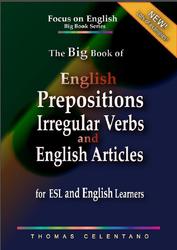 The Big Book of English Prepositions, Irregular Verbs, and English Articles, For ESL and English Learners, Celentano T., 2020 — This book goes beyond just being a guide to the correct use of English prepositions, irregular verbs, and English articles. … Книги по английскому языку
The Big Book of English Prepositions, Irregular Verbs, and English Articles, For ESL and English Learners, Celentano T., 2020 — This book goes beyond just being a guide to the correct use of English prepositions, irregular verbs, and English articles. … Книги по английскому языку Elementary Anecdotes in American English, Hill L.A., 1980 — Elementary Anecdotes in American English is the first in a series of three readers for students of English as a … Книги по английскому языку
Elementary Anecdotes in American English, Hill L.A., 1980 — Elementary Anecdotes in American English is the first in a series of three readers for students of English as a … Книги по английскому языку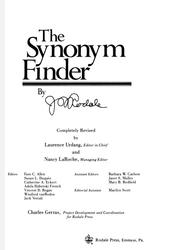 The Synonym Finder, Rodale J.I., 1978 — Originally published in 1961 by the founder of Rodale Press, The Synonym Finder continues to be a practical reference tool … Книги по английскому языку
The Synonym Finder, Rodale J.I., 1978 — Originally published in 1961 by the founder of Rodale Press, The Synonym Finder continues to be a practical reference tool … Книги по английскому языку Language to go, Pre-Intermediate, Student’s Book, Cunningham G. — Language to go, Pre-Intermediate, Student s Book, Cunningham G. Language to go is a four-level course with international appeal, for … Книги по английскому языку
Language to go, Pre-Intermediate, Student’s Book, Cunningham G. — Language to go, Pre-Intermediate, Student s Book, Cunningham G. Language to go is a four-level course with international appeal, for … Книги по английскому языку

